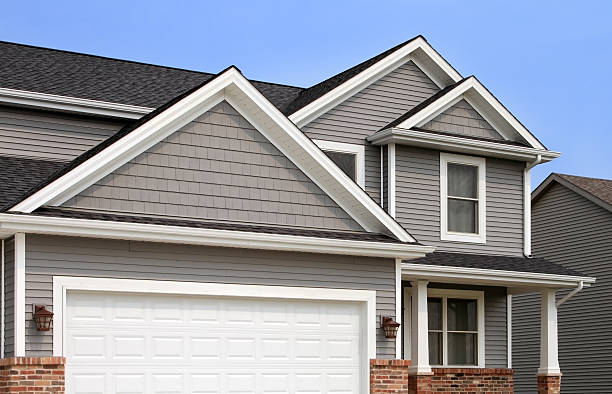How to Repair Siding?
by siteadmin

DAP Platinum patch Advanced Exterior Filler can be used to repair vinyl siding divots and holes. Dip a plastic putty blade in water and apply a thin layer of filler. Allow it to dry completely before moving on to the next repair.
Replace the existing siding or purchase a color patch that matches.
Caulking
Caulking is a simple solution for holes, dents, and cracks that appear in vinyl siding panels. This can save you the time and expense of replacing the panels.
Buy exterior caulk specially designed to work with vinyl. Caulk guns are usually sold in tubes and make application easier. The color should complement or closely match the siding's tone for best results.
Before applying caulk to the damaged area, it is important that you thoroughly clean it with soap and water. Ensure that there aren't any nails or screws holding the panels together. Once caulk is set, it can be painted to hide the repairs.
Patching
Repairing siding damage can restore its aesthetic. While patching may take more time than caulking to complete, it will look more visually appealing once completed and save money when using professional contractors. While novice DIYers may want to avoid this type of repair work, experienced and diligent homeowners will be able to complete it successfully and save money on repair bills.
Start by collecting a spare piece of vinyl siding that matches in color with the damaged section. Use a utility blade to cut a vertical strip (no more than two feet long) from the edge, being careful to remove any perforations or lower rolled edges.
Use a caulking tool to apply a small amount of waterproof caulk to the hole. Allow it to dry before sanding and smoothing. This will create a flat surface that can be painted with products that match vinyl siding.
Remove Damaged Siding
Dents and dents in siding are more than just an aesthetic problem. They can let cold air into your house, as well as moisture seep into it. This can lead to structural problems like rot. It is important to act quickly when minor damage occurs. By identifying the problem and fixing it immediately, you can prevent it from getting worse.
Caulking can be used to repair holes in most materials. Alternative siding repair methods will be needed for larger holes, those that are greater than one inch in diameter. These methods are described below.
Vinyl siding is easy to use and can be used to replace a board. Remove any paint, caulk, or nails that are near the damaged area. Cut a new piece to cover both rows affected as well as the respective laps above. Before installing the new piece, ensure that it matches the existing pieces.
Reinstalling Damaged Siding
Caulking can be used to fill small holes or cracks on your siding. For larger damage, you may need to replace the panels.
Before replacing damaged siding, clean the area around it to remove any mold or mildew. If your former homeowner saved any leftover siding pieces from when your home was sided, this will make the process of replacing it easier.
Use the template of the original panel to cut the replacement siding. Measure and cut a patch that extends two inches on either side to account for expansion/contraction due to weather fluctuations; once in place, caulk around both it and any holes or cracks to seal them off.
https://www.sidingrepairsanantonio.com/
siding installation san antonio
DAP Platinum patch Advanced Exterior Filler can be used to repair vinyl siding divots and holes. Dip a plastic putty blade in water and apply a thin layer of filler. Allow it to dry completely before moving on to the next repair. Replace the existing siding or purchase a color patch that matches. Caulking Caulking…
Recent Posts
- Holmes Plumbing and Drain: Your Trusted North Olmsted, Ohio Plumber
- The Premier Choice for Pest Control in Allen, TX
- How Visiting a Spa in San Diego Can Enhance Your Physical and Mental Well-being
- Common Lawn Mowing Mistakes to Avoid for a Lush Lawn
- Essential Cleaning Checklist for Maintaining Rental Properties’ Cleanliness
